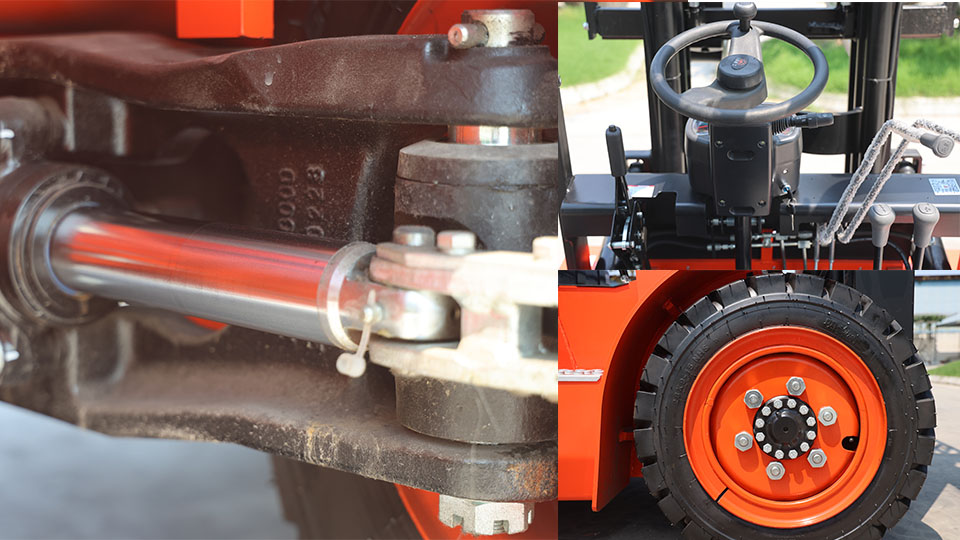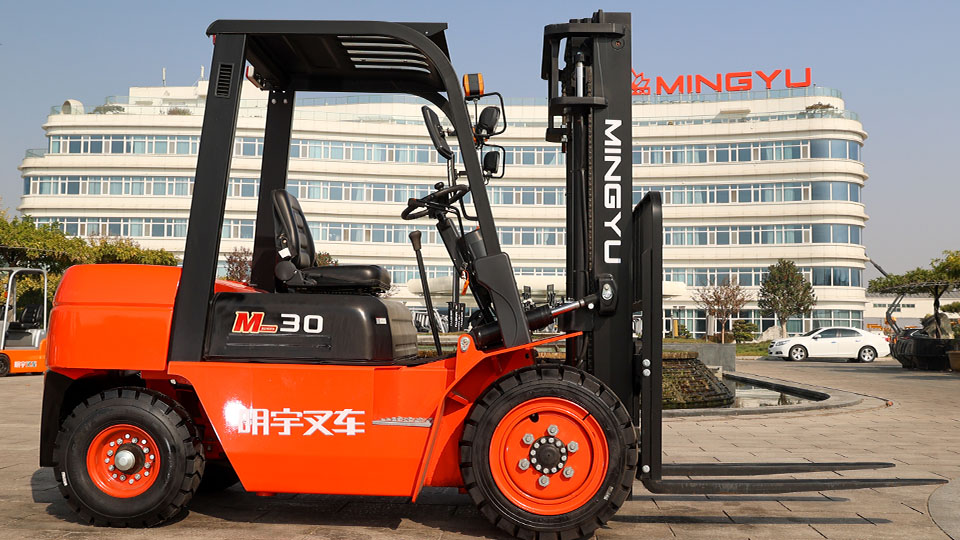
The Paramount Imperatives of Load Handling: When Using Industrial Forklifts, the Load Must...
The industrial forklift is the workhorse of global logistics, a powered industrial truck (PIT) that facilitates the movement of billions of tons of goods annually. While indispensable, the forklift is inherently a high-risk piece of equipment.1 According to safety regulators like the Occupational Safety and Health Administration (OSHA), fatal accidents often stem from tip-overs and being struck by loads. The vast majority of these incidents are directly traceable to a failure to adhere to one core principle: proper load handling.
For a forklift to operate safely and legally, the load it carries must meet a rigorous set of technical and regulatory criteria, centered primarily around the principles of Stability, Capacity, and Securement.2 This article details the essential state and positioning requirements that the load must satisfy when being approached, lifted, transported, and set down by an industrial forklift.
I. Stability: The Foundation of Safe Operation
The stability of a forklift, whether laden or empty, is governed by physics, specifically the concept of the Center of Gravity (CG) and the Stability Triangle.3 The load's condition and placement are the primary factors that shift the Combined Center of Gravity (CCG) and, consequently, determine the risk of a tip-over.
1. The Load Must Be Stable and Safely Arranged
Regulatory Mandate: OSHA Standard 29 CFR 1910.178(o)(1) explicitly requires that loads shall be "safely arranged and stable."
Securement: The load must be sufficiently bonded to itself and the pallet or skid to prevent shifting, falling, or collapsing during movement, acceleration, braking, or turning. This often requires industrial-grade stretch wrap, banding, or crating. Damaged or partially dismantled loads must be secured before being moved.4
Uniformity: Loose objects, boxes, or components must not overhang the pallet dimensions, as this introduces asymmetrical weight distribution and risks snagging or collision. Stacking must be done in a secure, interlocked, or 'cross-tiered' fashion where possible.5

2. The Load Must Be Within the Rated Capacity
Regulatory Mandate: OSHA Standard 29 CFR 1910.178(o)(2) states: "Only stable or safely arranged loads shall be handled.6 Caution shall be exercised when handling loads which cannot be centered."7
Consult the Data Plate (Nameplate): The load's weight must never exceed the maximum load capacity specified on the forklift’s data plate.8 This plate is legally required to detail the capacity, lift height, and rated load center for that specific truck configuration.9
The Inverse Relationship of Height and Capacity: The capacity plate often displays a load capacity chart showing that the maximum safe weight dramatically decreases as the mast height increases (due to the CCG moving upward and forward). At high lift heights, the capacity can be reduced by 50% or more.
Modified Capacity (Attachments): If the forklift is equipped with non-standard attachments (e.g., drum clamps, carpet poles, side-shifters), the load capacity plate must be updated to reflect the new, typically de-rated capacity. The weight of the attachment itself must be subtracted from the original capacity.10
3. The Load Must Be Centered As Nearly As Possible
Load Center Calculation: The load center is the horizontal distance from the vertical face of the fork shank to the load’s geometric center of gravity. Most standard forklifts are rated for a 24-inch (600 mm) load center, corresponding to a standard 48-inch (1200 mm) pallet.11
Minimizing Load Moment: The operator must position the load so its center is as close as possible to the fork carriage.12 When approaching an irregularly shaped or off-center load, the heaviest part must be positioned facing the mast/fork carriage to reduce the Load Moment (Load Weight 13$\times$ Load Center Distance).14 Exceeding the rated load center distance will reduce the truck’s actual safe lifting capacity, even if the load weight is below the plate's maximum.
II. Positioning: Requirements for Lifting and Transport
Safe operation is defined by the three phases of handling: Insertion, Lifting/Tilting, and Transport. The load's position during these phases is critical for maintaining the necessary stability.15
4. The Load Must Be Fully Seated on the Forks
Proper Insertion: Before lifting, the forks must be level and inserted into the pallet or load opening as far as possible.16 OSHA Standard 29 CFR 1910.178(o)(5) requires that forks be placed "under the load as far as possible."17
Two-Thirds Rule: As a best practice, the forks should be at least two-thirds the length of the load they are supporting to ensure maximum support and minimize the chance of the load rocking or sliding off the tips.18
Fork Spacing: The distance between the forks must be adjusted to be as wide as possible to provide maximum support and distribute the weight evenly, helping to center the load and stabilize it laterally.19
5. The Load Must Be Tilted Back Against the Carriage
Backward Tilt for Stabilization: Once the load is fully seated on the forks and lifted clear of the ground or stack, the mast must be carefully tilted backward just enough to cradle the load securely against the load backrest extension.20 This action draws the Combined Center of Gravity (CCG) rearward, back into the Stability Triangle, and prevents the load from sliding forward off the forks during acceleration or braking.
The Load Backrest Extension (LBE): The LBE is a mandatory safety feature that extends upward from the carriage to prevent the load, or parts of it, from falling backward onto the operator.21 The load must rest against or be supported by the LBE whenever it is elevated or tilted back.
6. The Load Must Be Carried at the Lowest Safe Traveling Height
Low Center of Gravity: The load must be kept as low as possible to the floor while traveling.22 This practice keeps the Combined Center of Gravity (CCG) low, maximizing the forklift’s stability and reducing the risk of a tip-over during turns or sudden stops.
Safe Travel Height: The generally accepted safe traveling height is typically 4 to 6 inches (10 to 15 cm) off the floor. This clearance is enough to prevent the forks from scraping the ground or striking small objects, but low enough to maintain maximum stability.
Never Travel with an Elevated Load: The load must not be raised or lowered while the forklift is in motion (OSHA 29 CFR 1910.178(o)(6)). Traveling with an elevated load drastically raises the CCG and makes the truck extremely unstable, especially during a turn.
III. Visibility and Environmental Requirements
Beyond the structural requirements of the load itself, its physical state and size dictate critical operational procedures related to operator visibility.
7. The Load Must Allow the Operator Adequate Visibility
Forward Obstruction: If the load obstructs the operator's forward view, the truck must be operated in reverse for the entire travel distance.23 The operator must always look in the direction of travel and maintain a clear view of the path, traffic, and pedestrians.24
Using Spotters: When approaching an obstruction or when positioning large loads where the operator's view is severely limited (e.g., stacking near the ceiling, loading into a restricted trailer), the operator must use a trained and authorized spotter to direct movement.
8. The Load Must Be Clear of Overhead Obstructions
Pre-Lift Check: Before the load is lifted, particularly in high-stacking operations or when driving into confined spaces (trailers, doorways), the operator must verify that the mast and load have adequate vertical clearance from overhead hazards.25
Overhead Hazards: This includes pipes, electrical lines, sprinkler systems, low ceilings, and rack beams.26 Contact with overhead objects can cause the load to be dislodged, the truck to overturn, or catastrophic damage to facility infrastructure.

IV. Technical Load Principles Summary Table
The safe handling of the load is a complex interplay of physics and regulatory compliance. The following summarizes the required condition of the load at different stages of operation:
|
Operational Phase |
Load Requirement |
Technical Rationale |
OSHA/Safety Reference |
|
Pre-Operation |
Within Rated Capacity |
Ensures the load moment is less than the truck's counterbalancing moment. |
29 CFR 1910.178(o)(2) |
|
Pre-Operation |
Stable and Secured |
Prevents movement/collapse of the load, maintaining a consistent CG. |
29 CFR 1910.178(o)(1) |
|
Insertion |
Centrally Positioned |
Minimizes the Load Center distance and symmetrical weight distribution. |
Best Practice / Standard Training |
|
Insertion |
Fully on Forks |
Distributes weight along the length of the fork, preventing load tip-off. |
29 CFR 1910.178(o)(5) |
|
Lift & Cradle |
Tilted Back |
Moves the CCG rearward (closer to the Stability Triangle's pivot point), increasing longitudinal stability. |
29 CFR 1910.178(o)(6) |
|
Traveling |
At Lowest Safe Height |
Keeps the CCG as low as possible, maximizing static and dynamic stability. |
4-6 inches (10-15 cm) |
|
Traveling |
Visible or Spotter Used |
Ensures the operator can monitor the travel path and avoid collisions. |
General Duty Clause / Training |
Conclusion
The successful operation of an industrial forklift is not a matter of muscle, but of precision and adherence to established engineering and safety principles. The core answer to the question, "When using industrial forklifts, the load must...?" is not a single point, but a chain of non-negotiable requirements that all center on one concept: maintaining the Combined Center of Gravity within the Stability Triangle.27
The load must be stable, centered, within the rated capacity, secured against the carriage, and carried low to the ground. A failure to comply with even one of these mandates—whether due to rushing, improper planning, or simple ignorance of the data plate—instantly shifts the dynamic equilibrium of the machine, creating a catastrophic hazard that threatens life, equipment, and inventory. For every certified operator, the load itself is the most critical element of the job, and its integrity is the single best measure of safe operation.
Name: selena
Mobile:+86-13176910558
Tel:+86-0535-2090977
Whatsapp:8613181602336
Email:vip@mingyuforklift.com
Add:Xiaqiu Town, Laizhou, Yantai City, Shandong Province, China